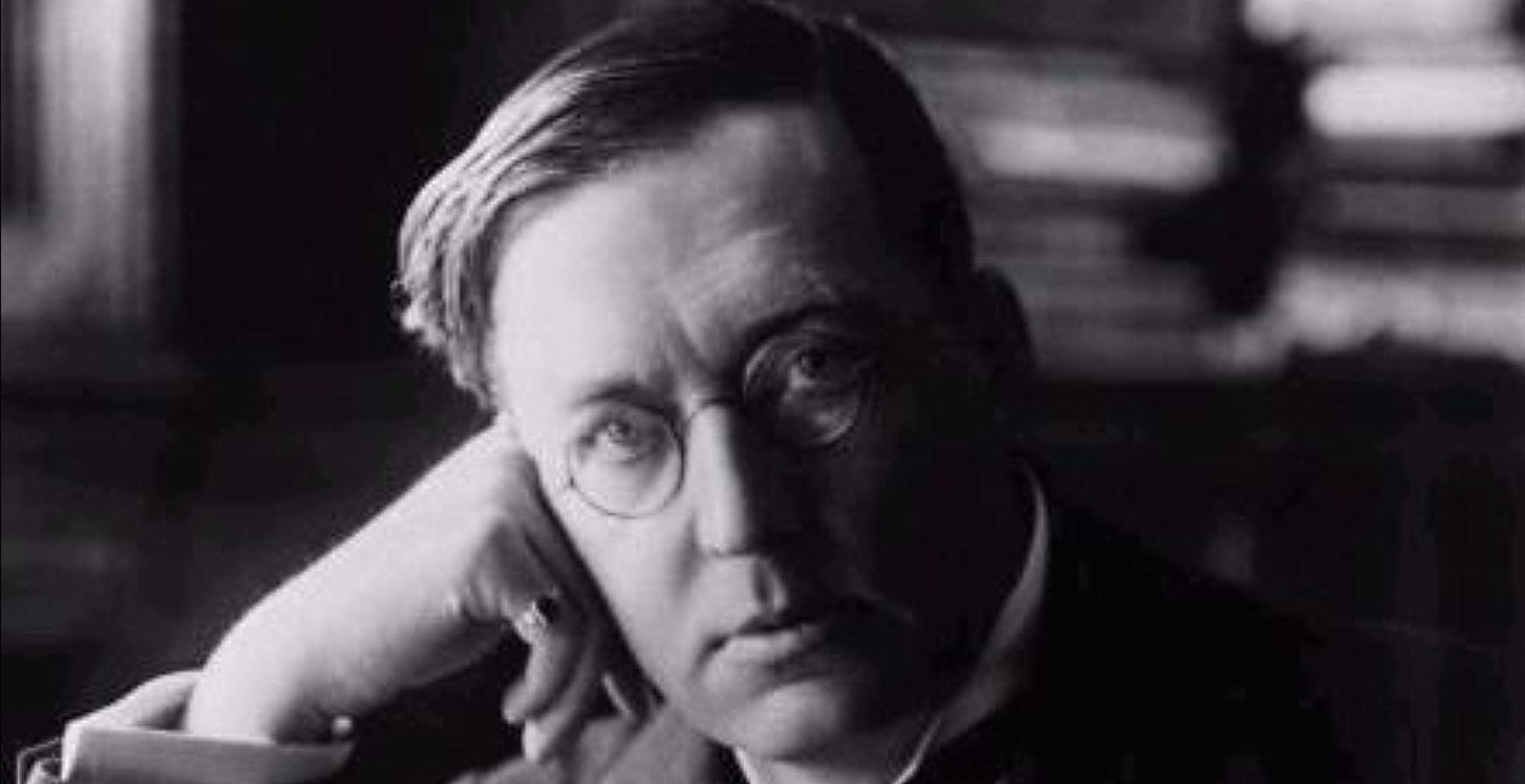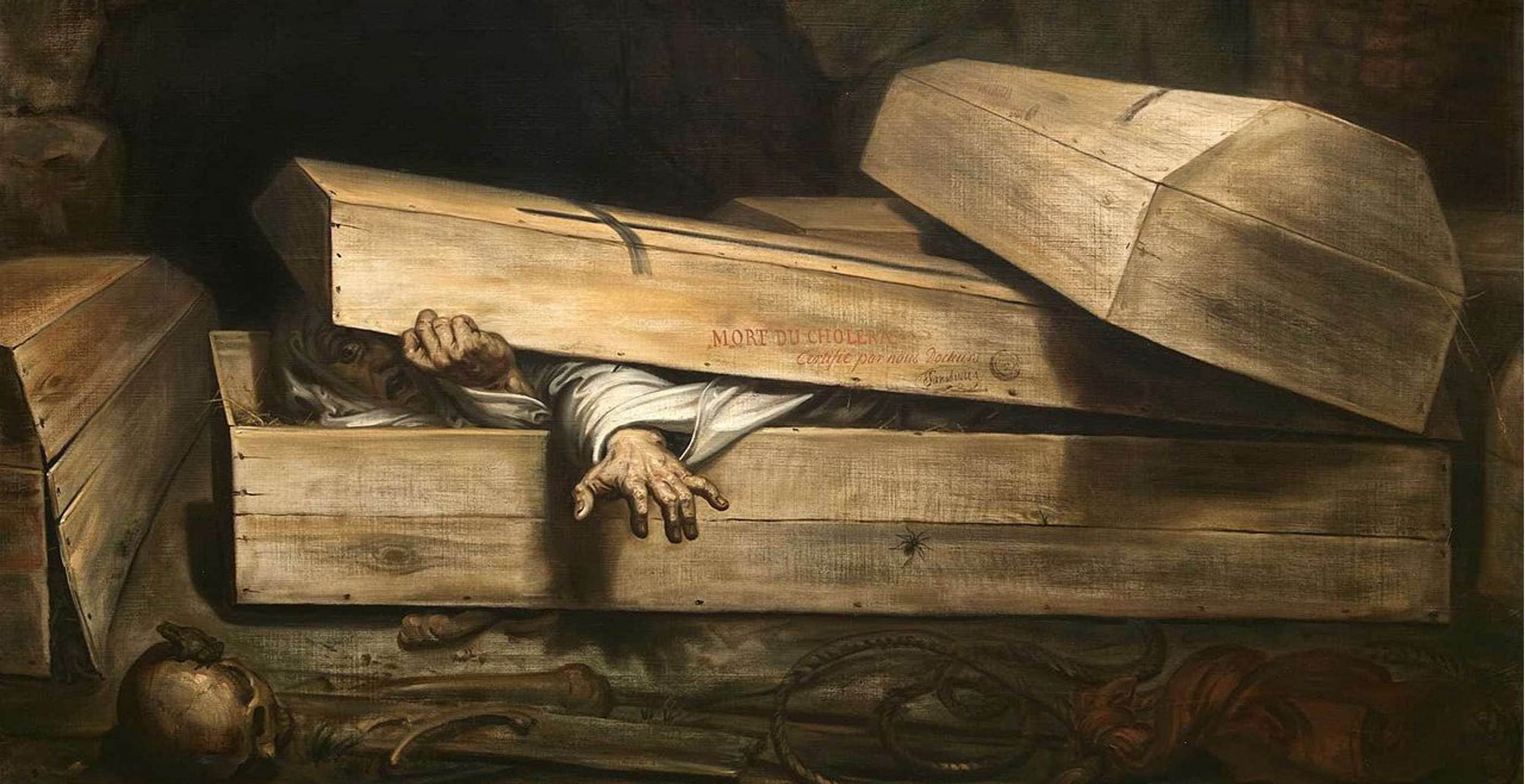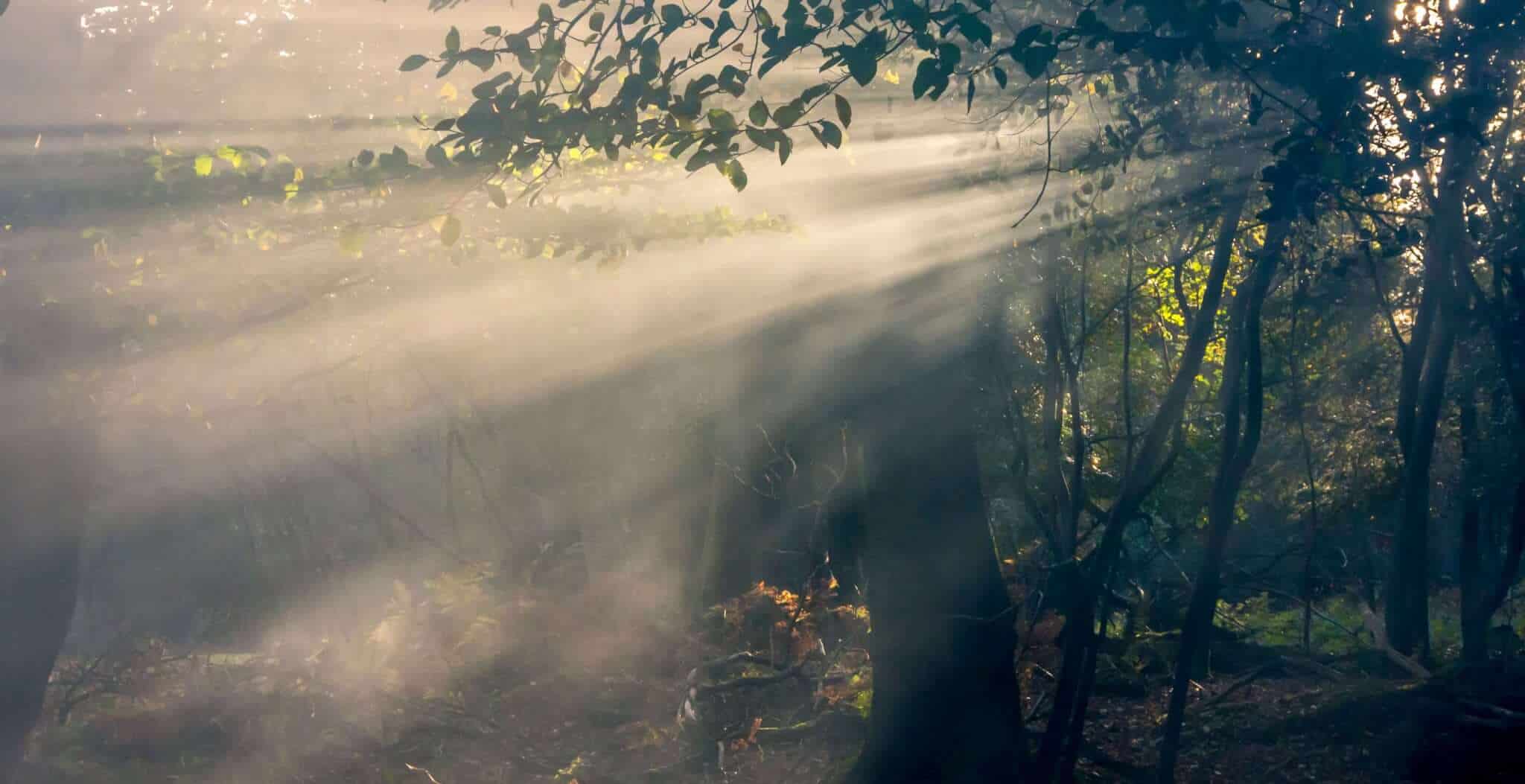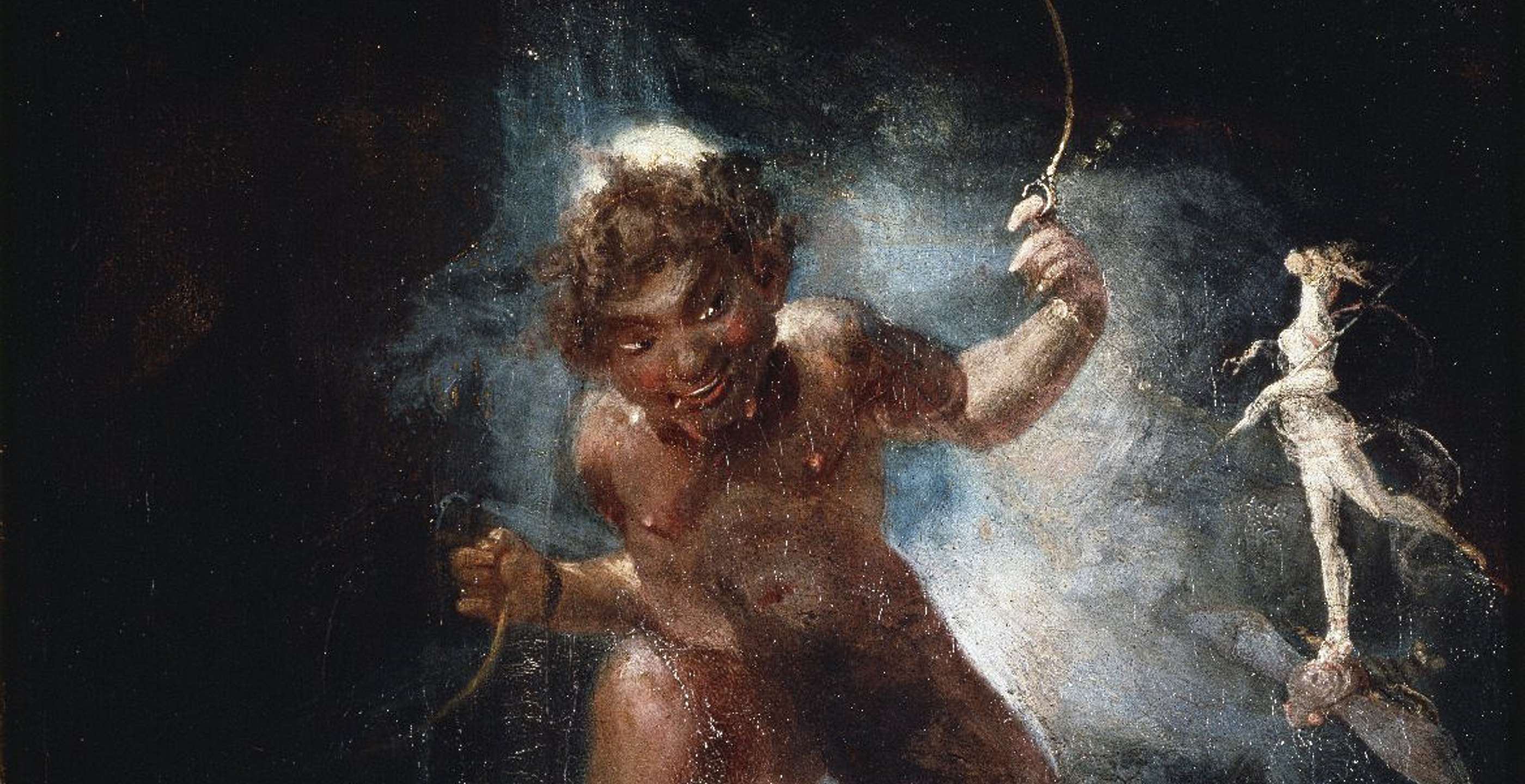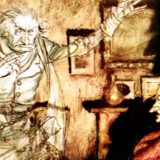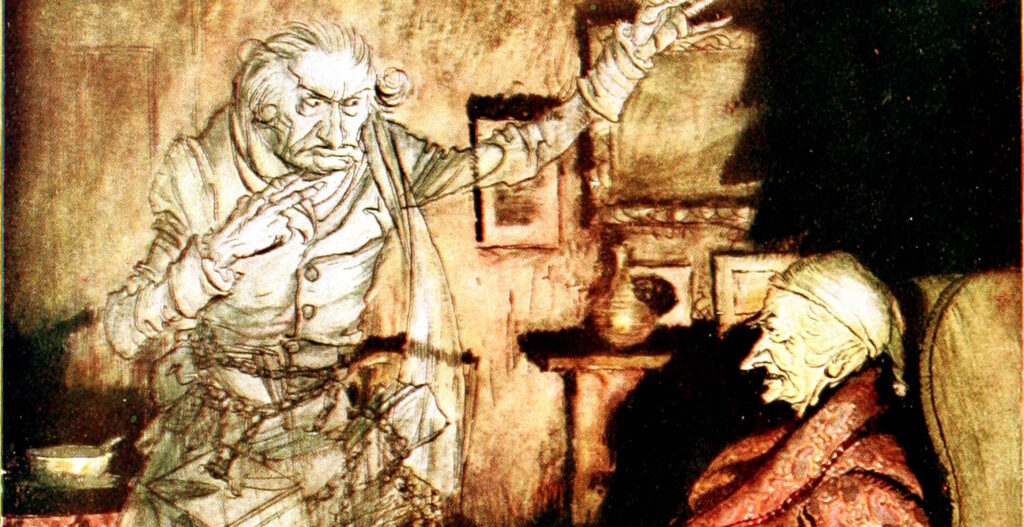As the northern hemisphere moves into its dark season, lovers of ghost stories turn with anticipation once again to the works of M.R. James. Acknowledged by many to be the master of the English ghost story, the work of Montague Rhodes James (1862 – 1936) provides the perfect antidote to anyone wanting to escape from the rowdy high-jinks of Halloween or the relentless sociability of Christmas for a few hours.
There, in the dim candle-lit world of scholars, librarians and antiquarians, things are lurking, half-seen, half-felt. In the words of one of the characters in his story “Count Magnus”, there are “persons walking who should not be walking. They should be resting, not walking”. Has the researcher looked a little too deeply into places where he – almost invariably, a he – should not have looked?
Whether linked to biblical references, runic scripts or medieval artefacts, out from the shadows they come, unholy spirits hungry for revenge. They reflect James’ own view of apparitions: “The ghost should be malevolent or odious: amiable and helpful apparitions are all very well in fairy tales or in local legends, but I have no use for them in a fictitious ghost story.” Few of the ghosts of M.R. James manifest classic ghostly characteristics, although he uses glimpses of distant tattered drapery, apparently in swift pursuit, to heart-stopping effect in “’Oh, Whistle, And I’ll Come To You, My Lad’”, along with the now infamous “horrible, an intensely horrible, face of crumpled linen”.
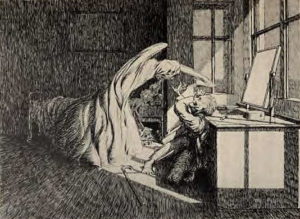
The majority of fans of M.R. James may agree with author Ruth Rendell’s comment that “There are some authors one wishes one had never read in order to have the joy of reading them for the first time. For me, M.R. James is one of these.” On the other hand, the remarkable thing about his stories is that no matter how many times they are read, the “James jolt” still has the power to shock.
Knowing what’s coming as the tension builds inexorably doesn’t necessarily lessen it. Perhaps this time when Mr Dunning slides his hand under his pillow to find his watch he will not touch – but there, I don’t want to spoil it for the first-time reader.
Retribution is a major theme in the work of M.R. James, and the retribution comes in various supernatural ways. Worldly clergymen, greedy treasure hunters. those with a desire for earthly power and even the overly curious will inevitably find demonic forces lurking just under the surface of everyday life, waiting for an opportunity to break through into modern times.
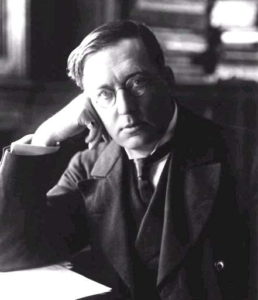
More than 80 years after his death, M.R. James still has a massive following. In fact, a whole academic industry has grown up around his work, with modern-day literary scholars searching for – and finding – deeper meaning in his ghost stories. Patrick J. Murphy, in his book “Medieval Studies and the Ghost Stories of M.R. James” recognises in the stories both characters that M.R. James knew in real life and reflections of James’ own Christian views on secularism and secularists.
The character of the occultist Karswell in “Casting the Runes”, he argues, is not intended to represent Aleister Crowley who attended Cambridge in the 1890s when James was Junior Dean of King’s College. Crowley was 13 years younger than James and had not established the reputation for which he was later so infamous. The figure of Karswell, Murphy believes, is more likely to represent the “notorious personality” of Oscar Browning also known as “the O.B”, whose “reputed character lines up so well with Karswell that it is surprising the case has not been made before”.
The identification of characters as people that he actually knew adds a whole new dimension to the ghost stories that M.R. James read by candlelight to undergraduates and friends in his cluttered, dusty rooms in King’s College. This Christmas ritual became firmly established and he was often writing furiously to complete them, right up until the last minute. One of those in the circle describes how “Monty emerged from the bedroom, manuscript in hand at last, and blew out all the candles but one, by which he seated himself. He then began to read, with more confidence than anyone else could have mustered, his well-nigh illegible script in the dim light”.
The desperate attempt to meet a deadline, a situation with which most writers are familiar, did result in some variability in the tales. His story “Two Doctors” doesn’t really compare with stories such as “’Oh Whistle’”, “The Stalls of Barchester Cathedral”, “Casting the Runes” or “Lost Hearts”. However, even these lesser-known stories have their own shock factor; in this case, a human face contained like a chrysalis in a cocoon. His story “The Doll’s House” was written to be included as a tiny version in the library of a real doll’s house – that of the Queen at Windsor!
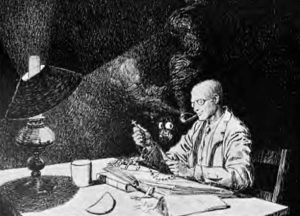
In fact, although some of his stories were first published as “Ghost Stories of an Antiquary” and “More Ghost Stories of an Antiquary”, it could be argued that they are tales of terror rather than traditional ghost stories. James greatly admired the work of both Sheridan Le Fanu and Walter Scott, and along with the horror his stories contain a strong element of the weird, in its original sense of uncanny.
James showed an interest in, and commitment to, history and archaeology from a very young age. An anecdote recounted in his memoirs and retold by his biographer Michael Cox reveals the extent of his ability. At the age of 16 he and a friend translated the “apocryphal text, The Rest of the Words of Baruch, as a new apocryphal text was already ‘meat and drink’ to him” and they “sent it up to Queen Victoria at Windsor Castle with a ‘very polite letter to Her Majesty, beseeching her to accept the Dedication of our work’…”
Far from seeing this as an example of initiative, senior officials at Windsor Castle and his headmaster at Eton viewed it as an impertinent act and he was verbally chastised for it. However, James proved the doubters wrong by later becoming Assistant Director and subsequently Director of the Fitzwilliam Museum in Cambridge. He held this post at the same time as that of Provost at King’s College. His academic work, particularly on the Apocrypha, is still referenced today.
His outstanding academic ability seems to have been based in part on a phenomenal memory and also a sharp instinct for finding, identifying and interpreting extremely obscure manuscripts. His obituary, quoted in his biography by Michael Cox, sums up how puzzling it was to his peers that he was able to do this as well as maintain an incredibly active social life that went on well into the small hours: “’Is it true that he is ready to spend every evening playing games or talking with undergraduates?’ ‘Yes, the evenings and more.’ ‘And do you know that in knowledge of MSS he is already third or fourth in Europe?’ ‘I am interested to hear you say so, Sir.’ ‘Then how does he manage it?’ ‘We have not yet found out.’”
M.R. James was Vice-Chancellor of the University of Cambridge when war broke out in 1914. By October 1915, when he resigned from the post, he knew that “more than four hundred and fifty Cambridge men have fallen: a hundred and fifty of them, at least, should have been undergraduates still”. In 1918, James left Cambridge to return to his old school Eton as Provost, where he was responsible for the creation of memorials for the former pupils of the school who had been killed during the war. He died there in 1936 as the choir was singing the Nunc Dimittus: “Now, Lord, let your servant depart in peace, as you promised”.
Existing M.R. James enthusiasts will know the wealth of material that is available on his work, from TV and radio series of his ghost stories, to the magazine “Ghosts and Scholars” created by Rosemary Pardoe. First-time readers are advised to get comfortable with a glass of wine or a cup of something warming and settle down to enjoy. Keep an eye on the curtains, though…
Miriam Bibby BA MPhil FSA Scot is a historian, Egyptologist and archaeologist with a special interest in equine history. Miriam has worked as a museum curator, university academic, editor and heritage management consultant. She is currently completing her PhD at the University of Glasgow.
